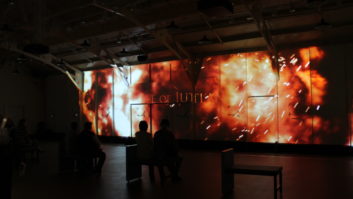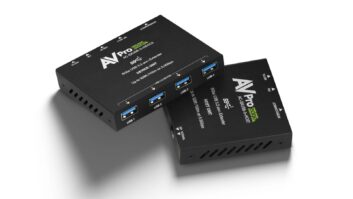 One of the most permanent consequences of the pandemic has been the rapid rise of hybrid working. Employees have retained unprecedented flexibility in how they approach their professional life: the Office for National Statistics found that 28% of the UK workforce, and 40% of Londoners, have worked remotely as of January ’23.
One of the most permanent consequences of the pandemic has been the rapid rise of hybrid working. Employees have retained unprecedented flexibility in how they approach their professional life: the Office for National Statistics found that 28% of the UK workforce, and 40% of Londoners, have worked remotely as of January ’23.
Such growth has been made possible by conferencing technologies that facilitate remote collaboration. But the present array of tools and equipment aren’t always up to scratch, wherever they’re used.
That represents a huge opportunity for manufacturers. If they can identify and attack user frustrations, they can design and deliver new levels of user experience for one of the most prominent employee markets.
Conference calls have become a mainstay in the standard work week, with an XMOS study of 2,000 remote workers finding that office employees spend significant periods in virtual collaboration. Nearly a third (32%) of respondents spend 1-2 hours a week participating in conference calls; one fifth (20%) spend up to 3-4 hours, while over a fifth (21%) are in meetings for more than five hours.
Given this huge investment of time into virtual settings, it’s absolutely imperative that devices provide a high quality of communication as standard. But less than half of remote workers (41%) are happy with the available software and hardware – likely because over three quarters (78%) regularly experience problems with their conferencing set up.
The user experience is in serious need of standardisation and optimisation. The most regularly cited challenge for remote workers is poor audio quality, ranging from lack of sound on calls to annoying echoes. Over half (51%) say they’ve experienced poor quality audio in the last 12 months.
Then there’s video-based issues, whether it’s not knowing if colleagues are paying attention (25%), cameras being out of sync with other technology (21%) and perhaps most awkwardly, not being able to remove filters from your face (14%). Unwanted appearances are another problem, with 28% of respondents interrupted by pets or children.
These inefficiencies, among several other performance issues, highlight the need for available tech to effectively integrate with one another and optimise user experience.
PAIN POINTS
The appetite and requirement for viable conferencing solutions isn’t going away. There’s a genuine need to tackle the conferencing pain points if a seamless, stress-free remote employment experience is the goal.
By prioritising user feedback, manufacturers can identify solutions that are truly effective and efficient. Most importantly, it’s possible to address the audio problems that comprise most user concerns. High-performance audio processors, for example – potentially equipped with features like acoustic echo cancellation, noise suppression, and accurate voice capture technology – would specifically address the issues mentioned in our research.
With these in place, device engineers will be able to address user concerns and streamline daily tasks for office staff. In doing so, they’ll be primed to cater toward more demanding customers and gain a vital competitive advantage in their market.







